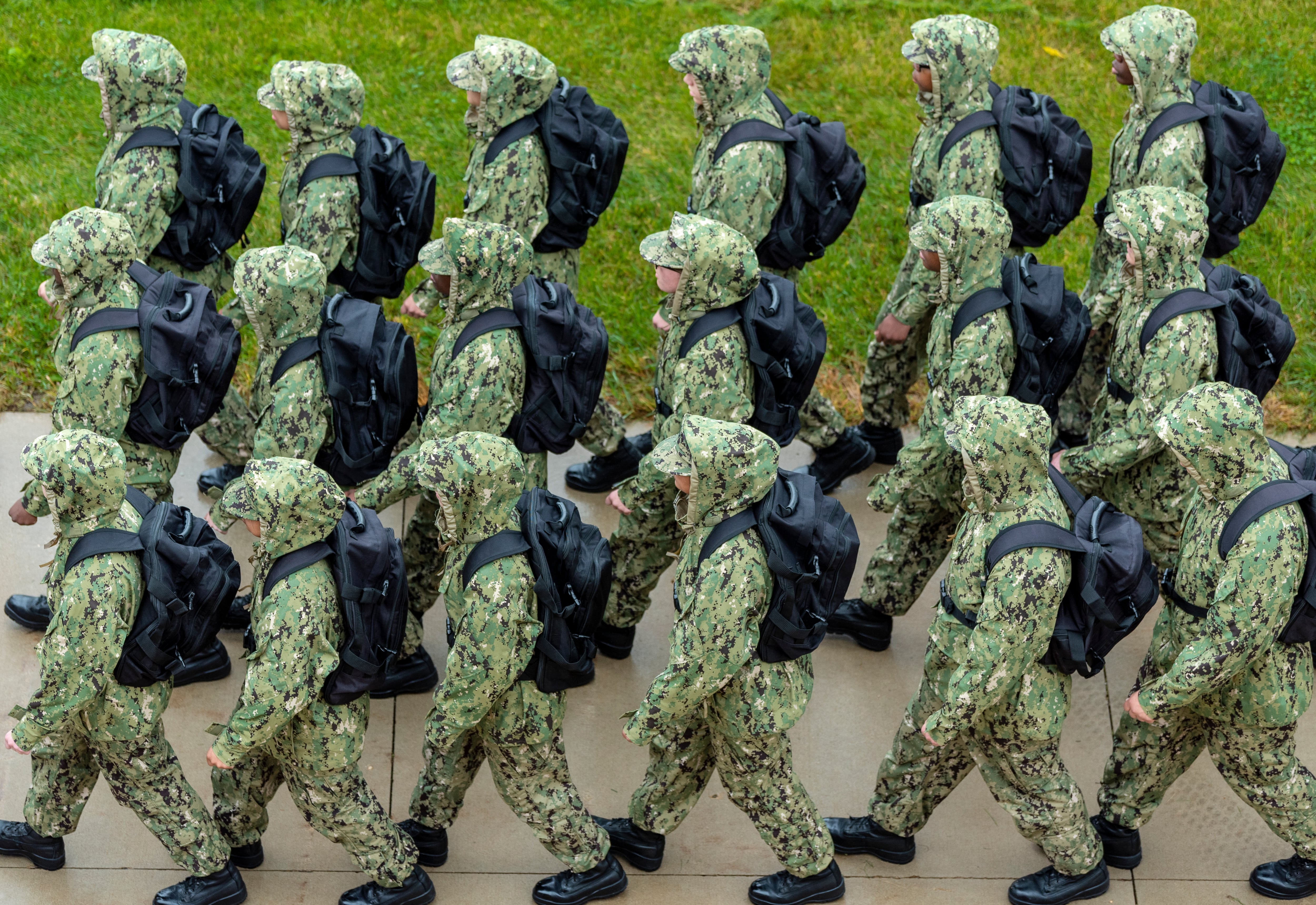Most of the military services are hoping to get smaller, as the Army, Navy and Air Force seek to slash thousands from their rolls.
The Defense Department budget request unveiled April 4 asks for Congress to cut about 25,000 positions from the military services, which would bring authorized end strength much closer in line with current manning levels.
The $813 billion budget request is the largest in history, up more than $17 billion from last year, but its goal “is not about making the force bigger,” comptroller Michael McCord told reporters April 4. “That is not what … our review concluded we needed to do. We’re looking at making the force more capable.”
The Army and Navy would shrink by more than 5,000 currently serving troops if the proposal is enacted as is, losing about 3,000 and 2,000 service members, respectively. The Air Force wants to drop around 5,700 active duty airmen by the start of fiscal 2023.
Overall, the military could draw down by more than 10,000 troops, though the Marine Corps and Space Force would see a small bump. The new authorized end strength could come in at 2,122,900, down from 2,147,540 in 2022.
The Army’s request to drop its active duty end strength marks a new direction for the service. In 2017, after planning to draw down, the Congress authorized the service to grow, from 460,000 to 476,000, with an eye toward 500,000 active duty soldiers by 2022.
But that goal proved difficult to reach, as recruiting pushes fell short of goals. The Army topped out at 486,490 in 2021, before falling to 476,000 currently.
“This is the same size Army that we had on 9/11, and when I take a look at what the requirements are, when I take a look at what historically we needed, and now that we’re in a time of great power competition, I’m very, very concerned about the size of the Army,” Army Chief of Staff Gen. James McConville said in April 2021.
The decision to shrink the service came down to the recruiting market, McCord said.
“The low unemployment rate right now, and the declining propensity to serve that I think several services are seeing ― the Army felt it was not productive to try and chase that number,” he said.
So, while the Army was authorized to go up to 485,000 active duty soldiers in 2022, a recent estimate put their manning at 476,000 troops. The 2023 budget request would bring them down to a cap of 473,000, a decrease in 12,000 billets ― or 3,000 currently serving soldiers.
RELATED

Service officials said April 4 they plan to regroup, eventually ramping up to 485,000 active duty soldiers in the next five years.
The Army Reserve and National Guard would stay flat at 189,500 and 336,000, respectively.
The Navy’s end strength is falling again this year, cutting 1,520 jobs for a total force of 404,000. A recent estimate of force size put the Navy at more than 406,000 sailors, making it technically overmanned.
The new request would put the service at:
- 346,300 active duty sailors, down 1,184
- 57,700 in the Reserve, down 951
The Navy on April 4 also announced its plans to decommission 24 ships, significantly reducing its manning requirements. McCord confirmed that the lower ship count factored into the decision to shrink the Navy’s workforce.
The Marine Corps, meanwhile, was allowed to go up to over 214,000 troops in 2022, but came in closer to 209,000.
Their budget request would even things out at 210,000:
- 177,000 active duty Marines, down 250
- 33,000 in the Reserve, up about 650
The Air Force Department is looking to cap its force at 510,400 troops, down from its 516,220-billet ceiling in 2022.
The changes work out to:
- 323,400 active duty billets, down from the previous 329,220 cap
- 200 more Space Force Guardian billets, from 8,400 to 8,600;
- 100 more Air National Guard billets, up to 108,400
- 70,000 Reserve billets, a decrease of 300 individual mobilization augmentee jobs
A DoD end strength chart released April 4 estimated the Air Force and Space Force will have about 510,300 uniformed personnel as of Sept. 30, 2022. Those people would occupy all but 100 jobs in the two services.
The service reported having around 329,000 active duty airmen as of April 4, putting it just over its current 329,220-billet limit. About 2,000 active duty airmen are slated to return to the Defense Health Agency after temporarily belonging to the Air Force.
The changes bring the entire military more in line with its current expectations for recruiting and retention. None of the services have announced any drastic force-shaping measures as a result, though the Air Force has offered early exits to its members in an attempt to correct its overmanning issues.
Otherwise, the services usually approach drawing down by decreasing recruiting efforts and pulling back reenlistment bonuses designed to keep troops who would otherwise finish their contracts in service. Elsewhere, fewer troops may be selected for promotions, eventually forcing them to involuntary separate from service.
Meghann Myers is the Pentagon bureau chief at Military Times. She covers operations, policy, personnel, leadership and other issues affecting service members.





